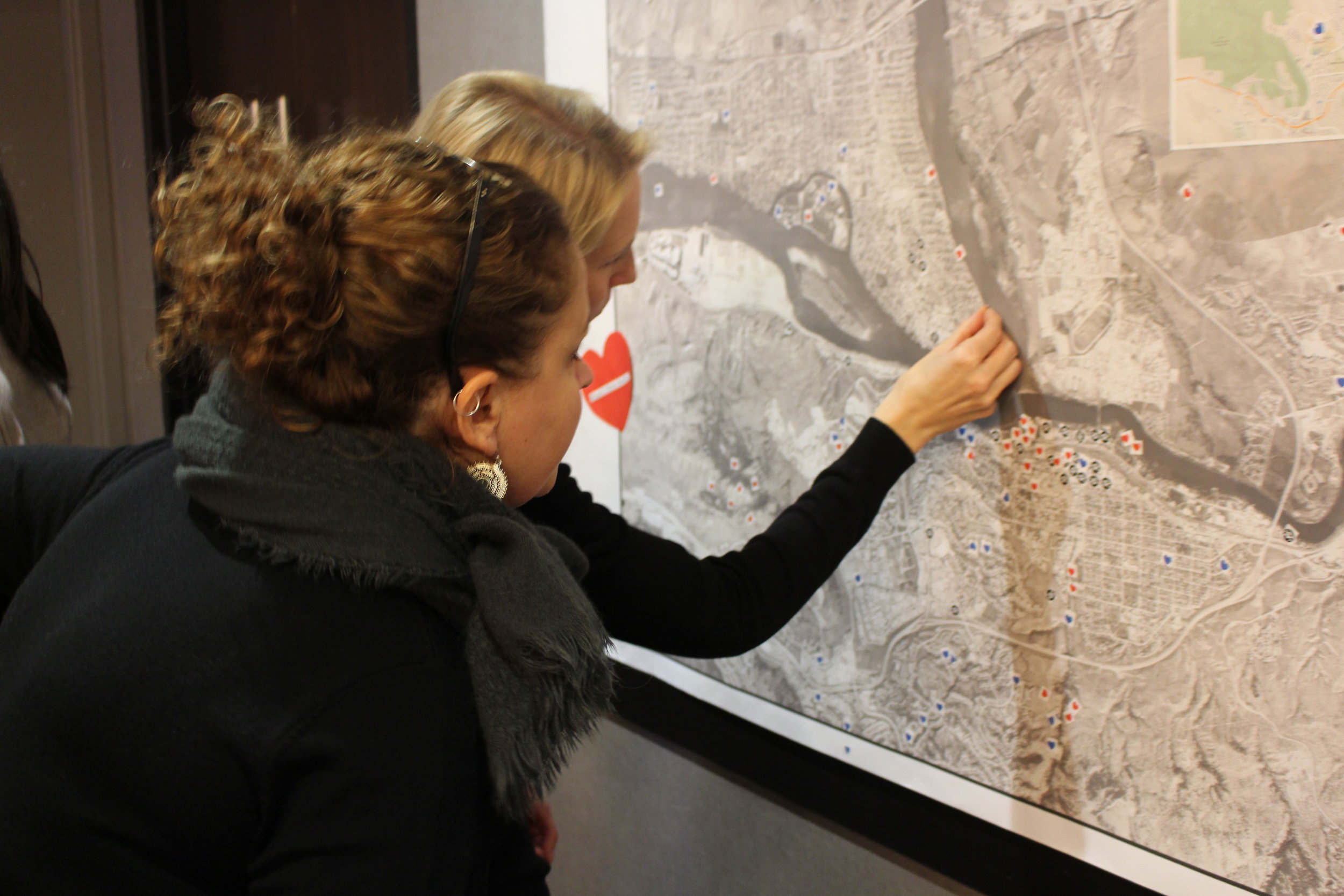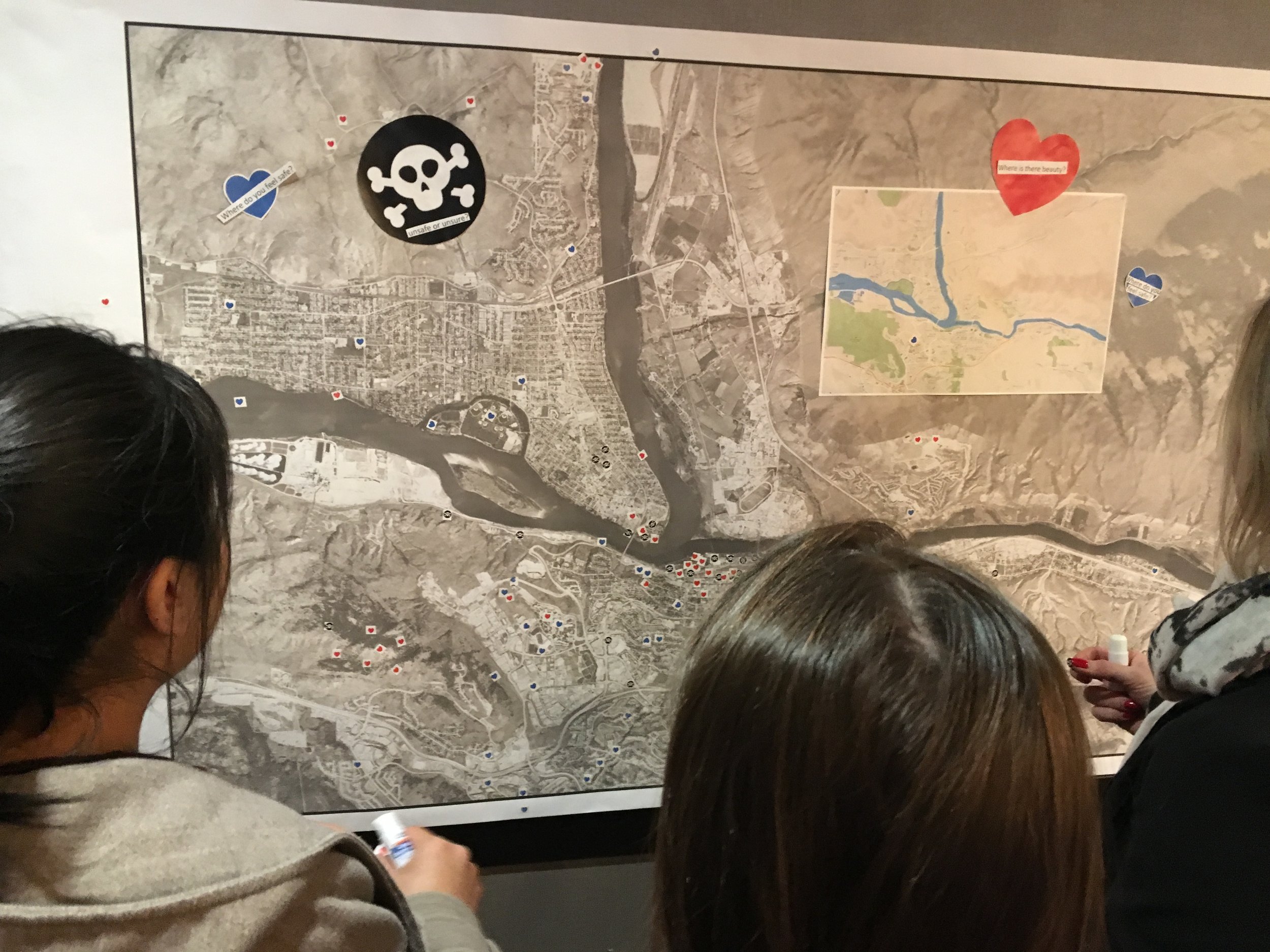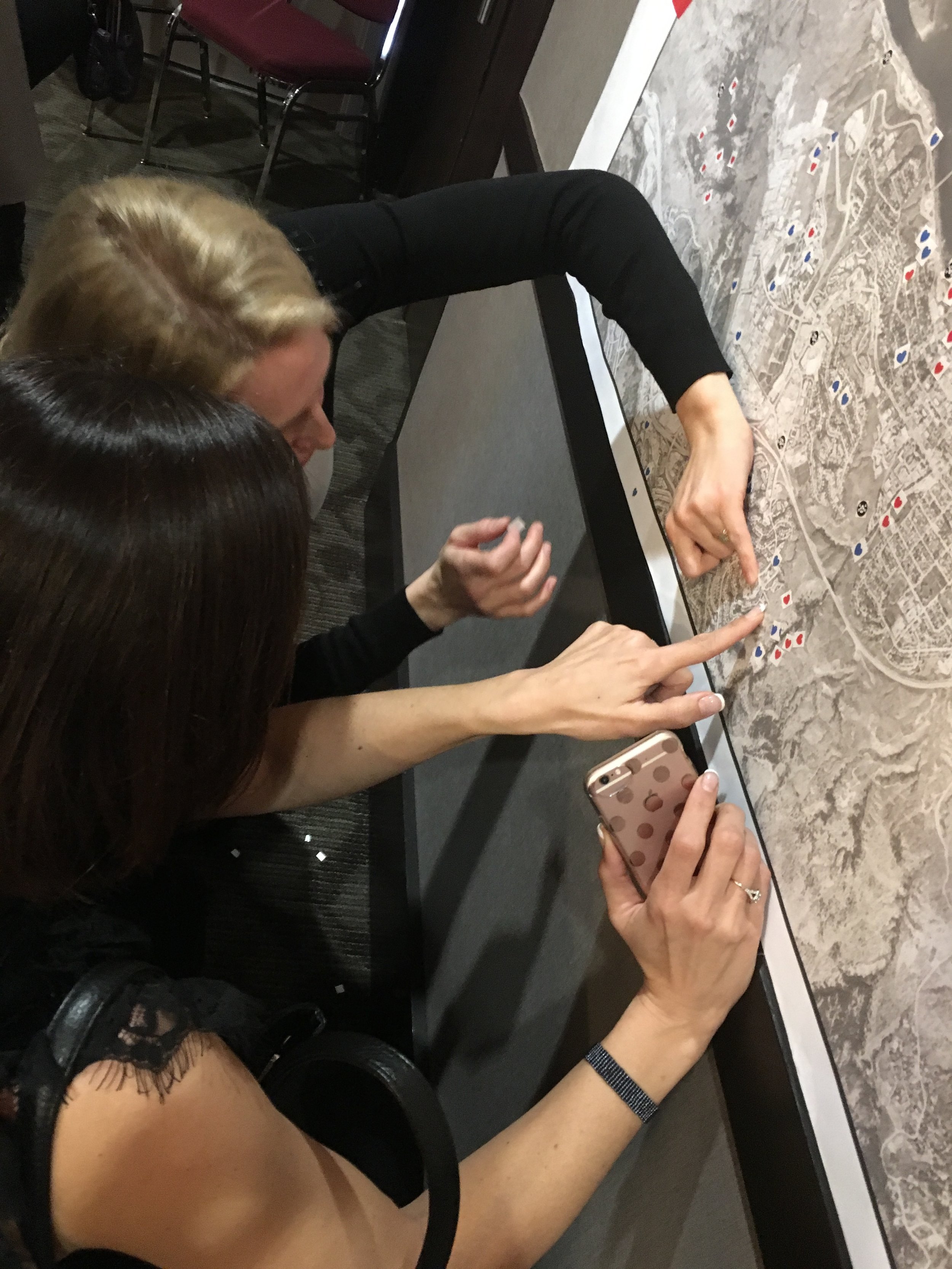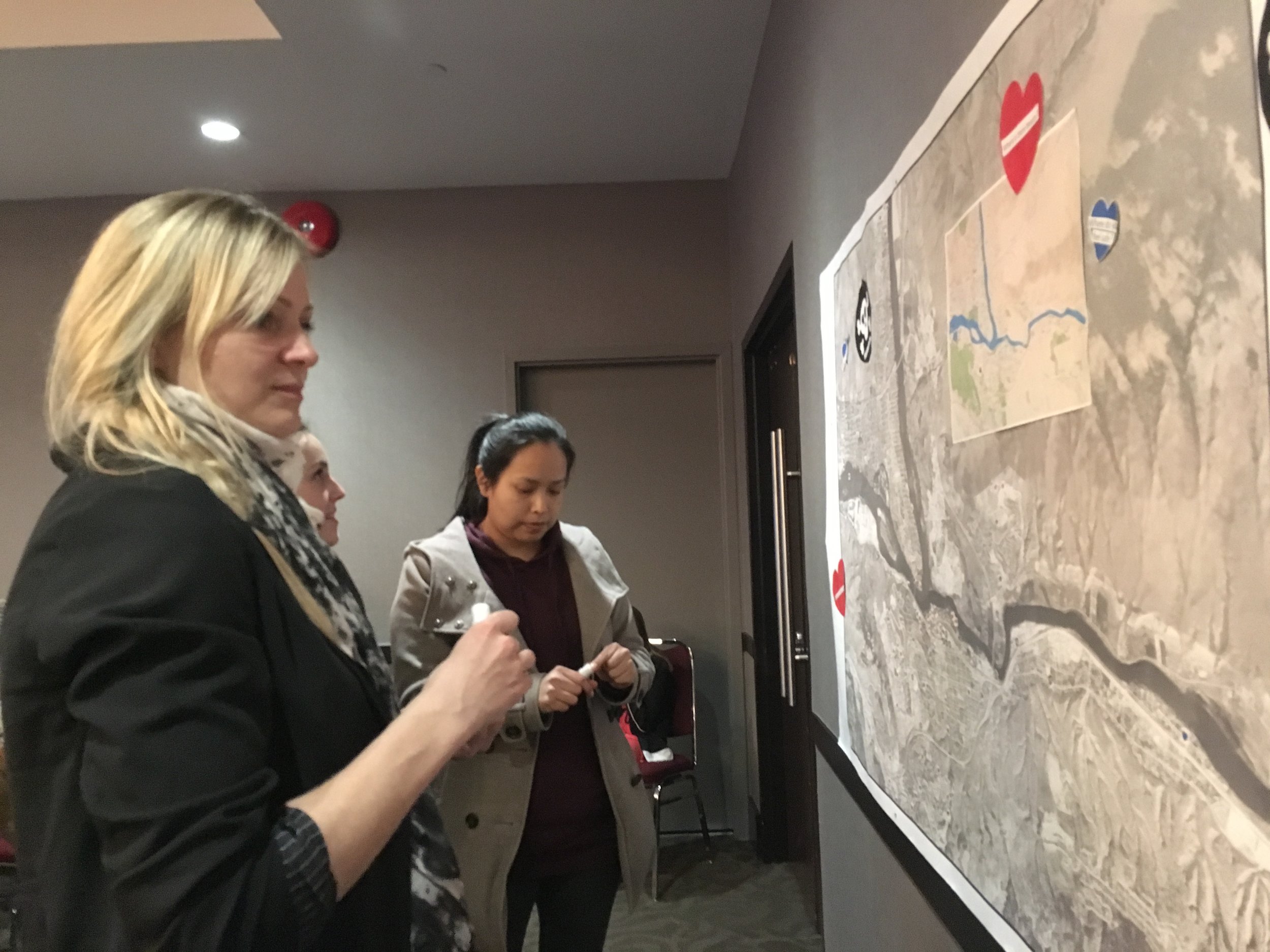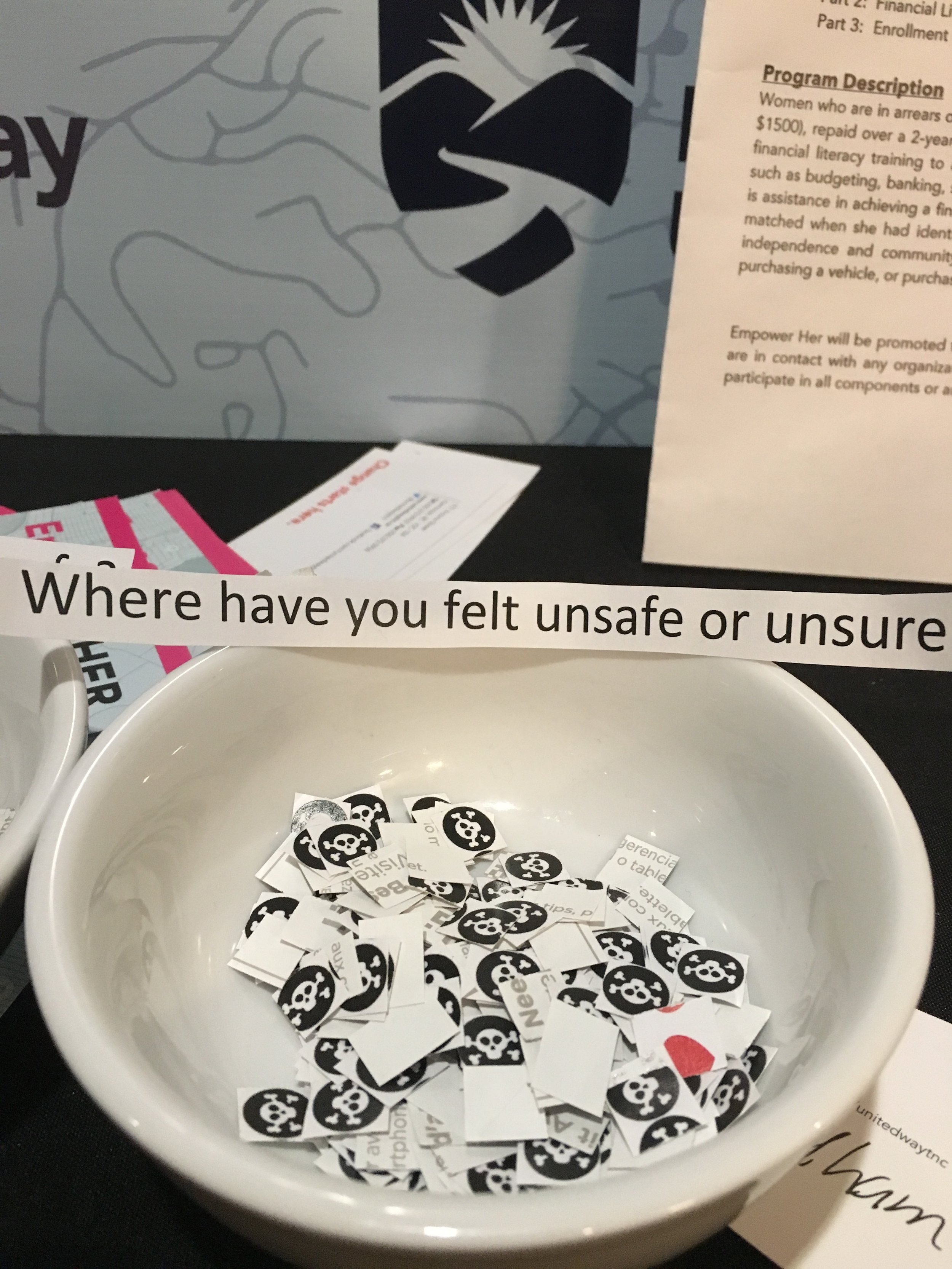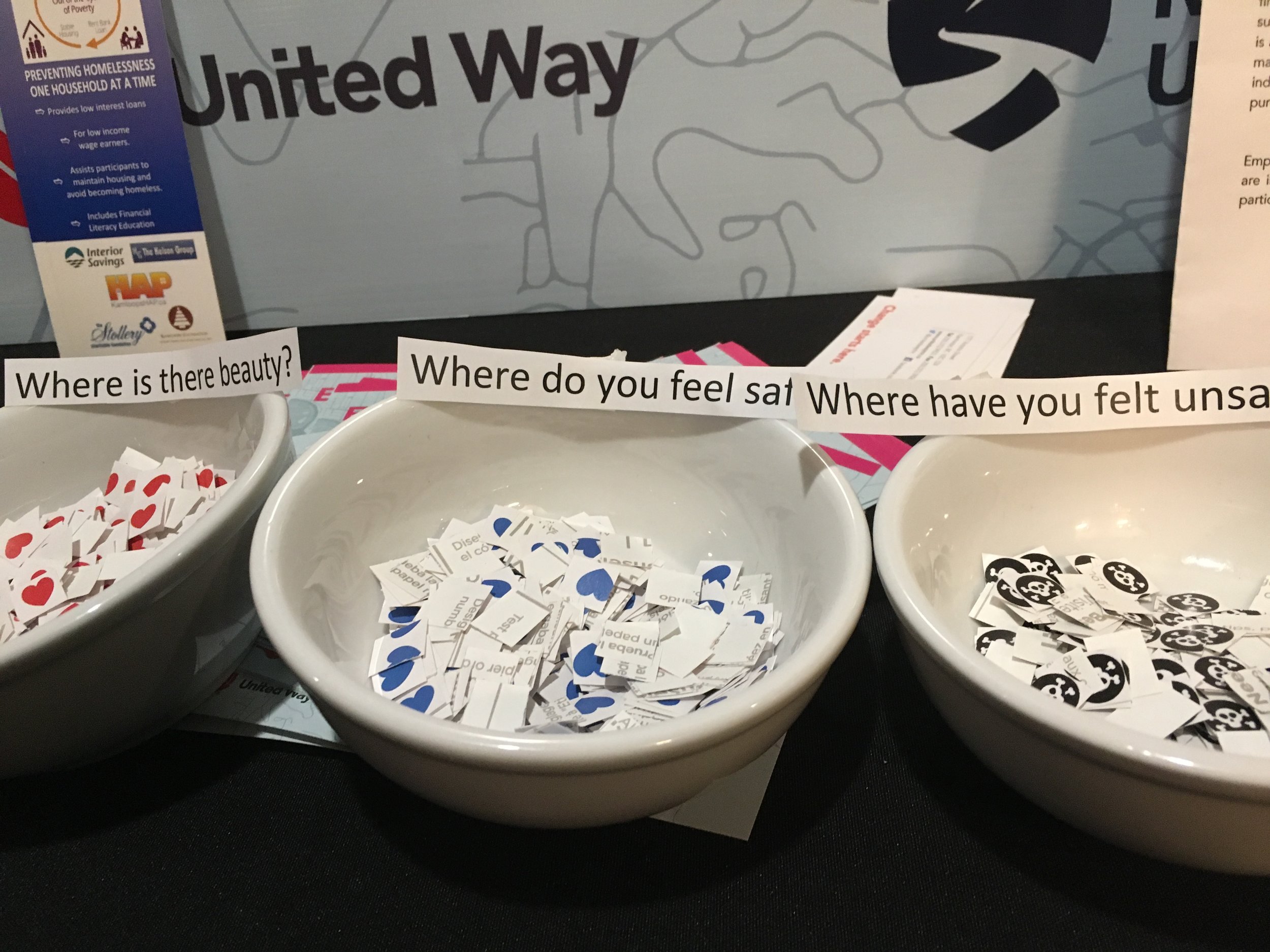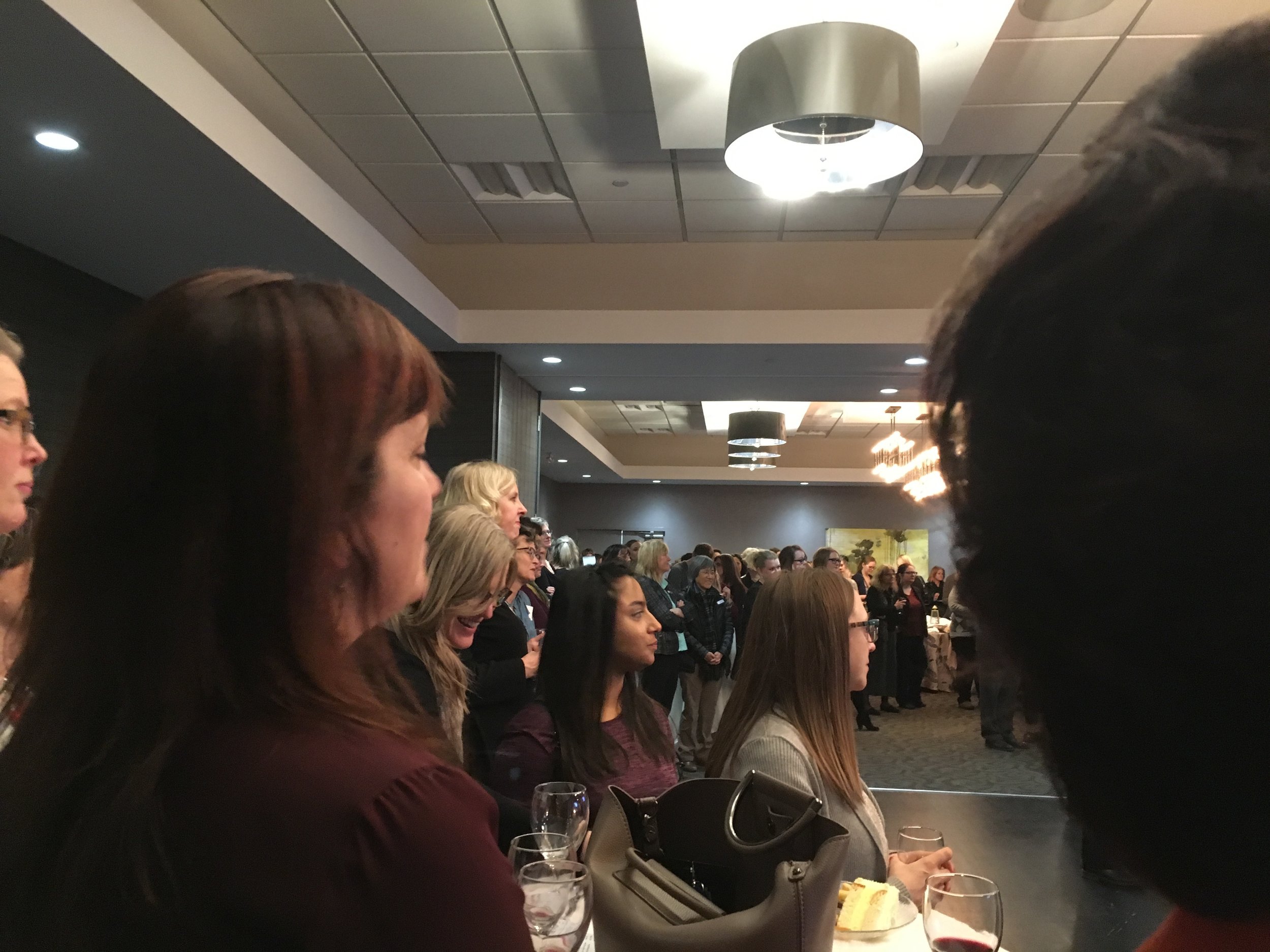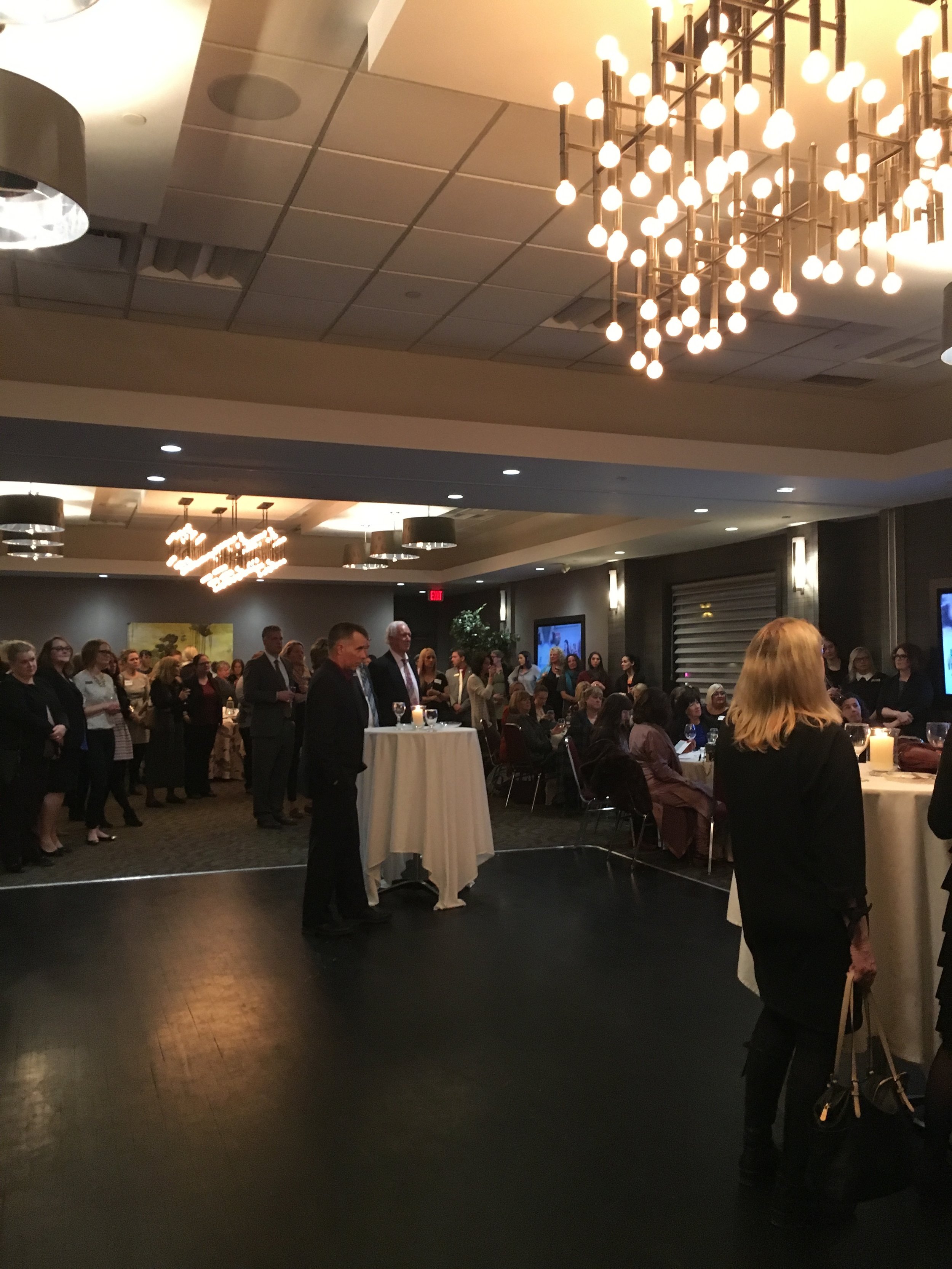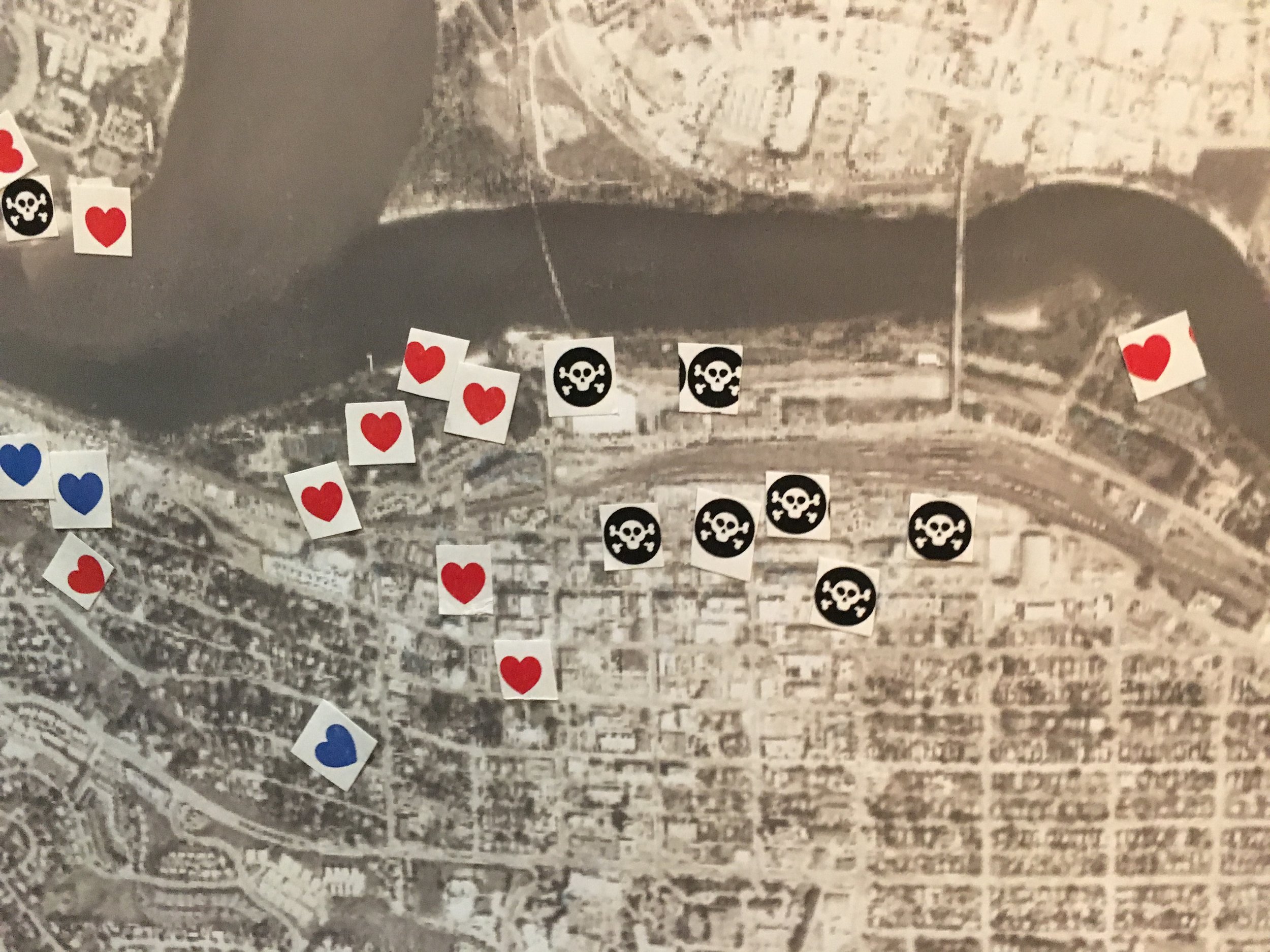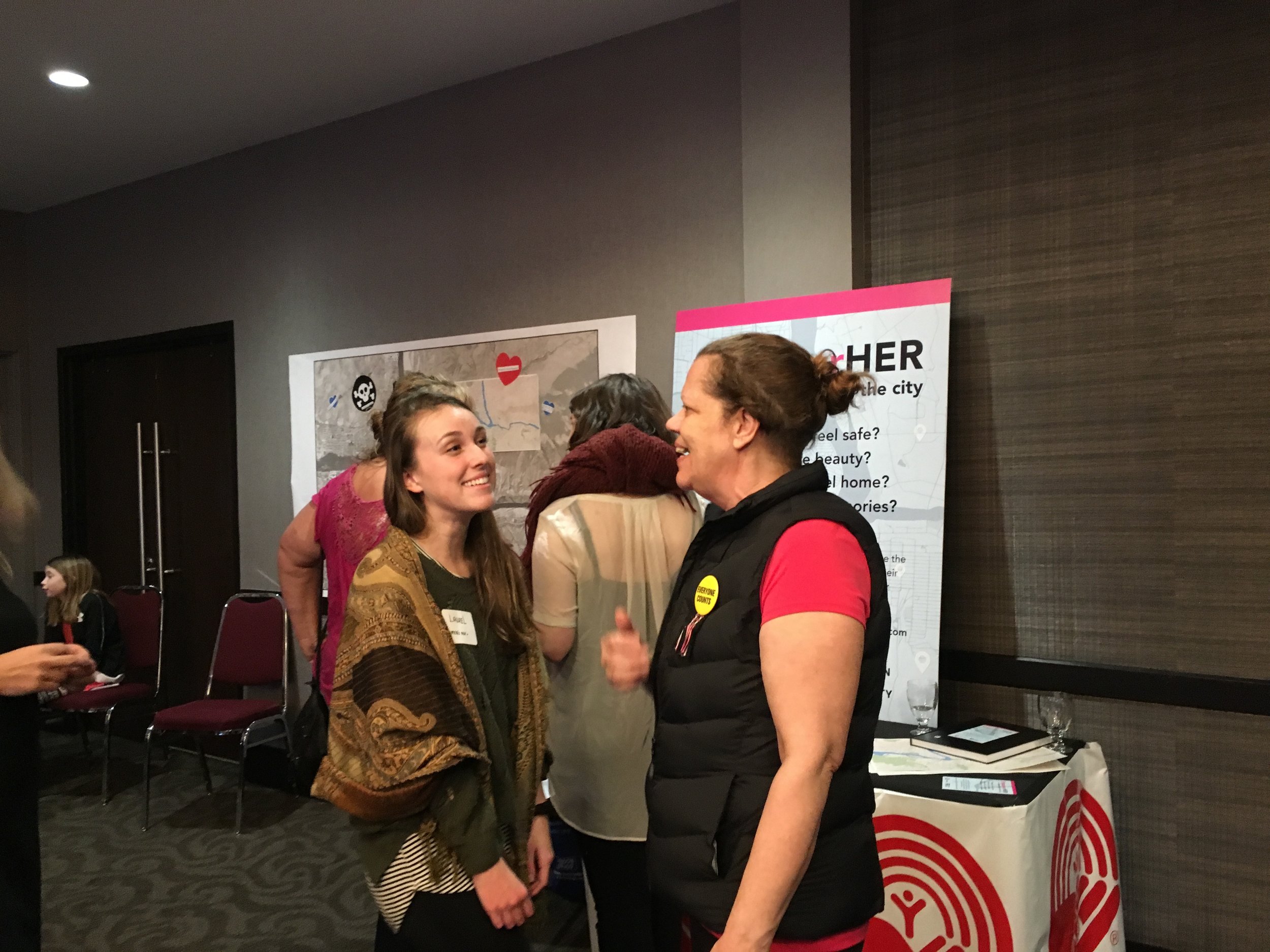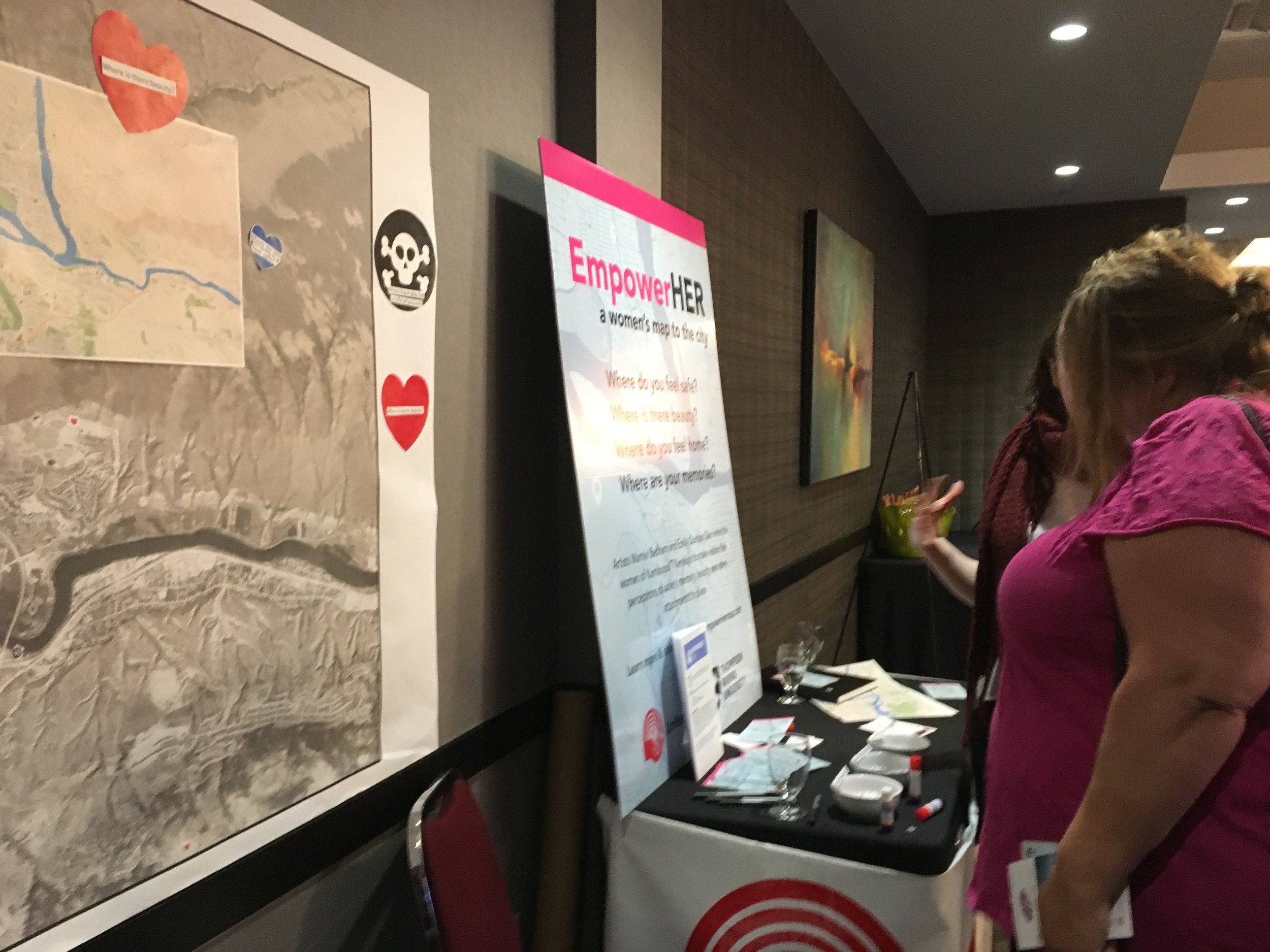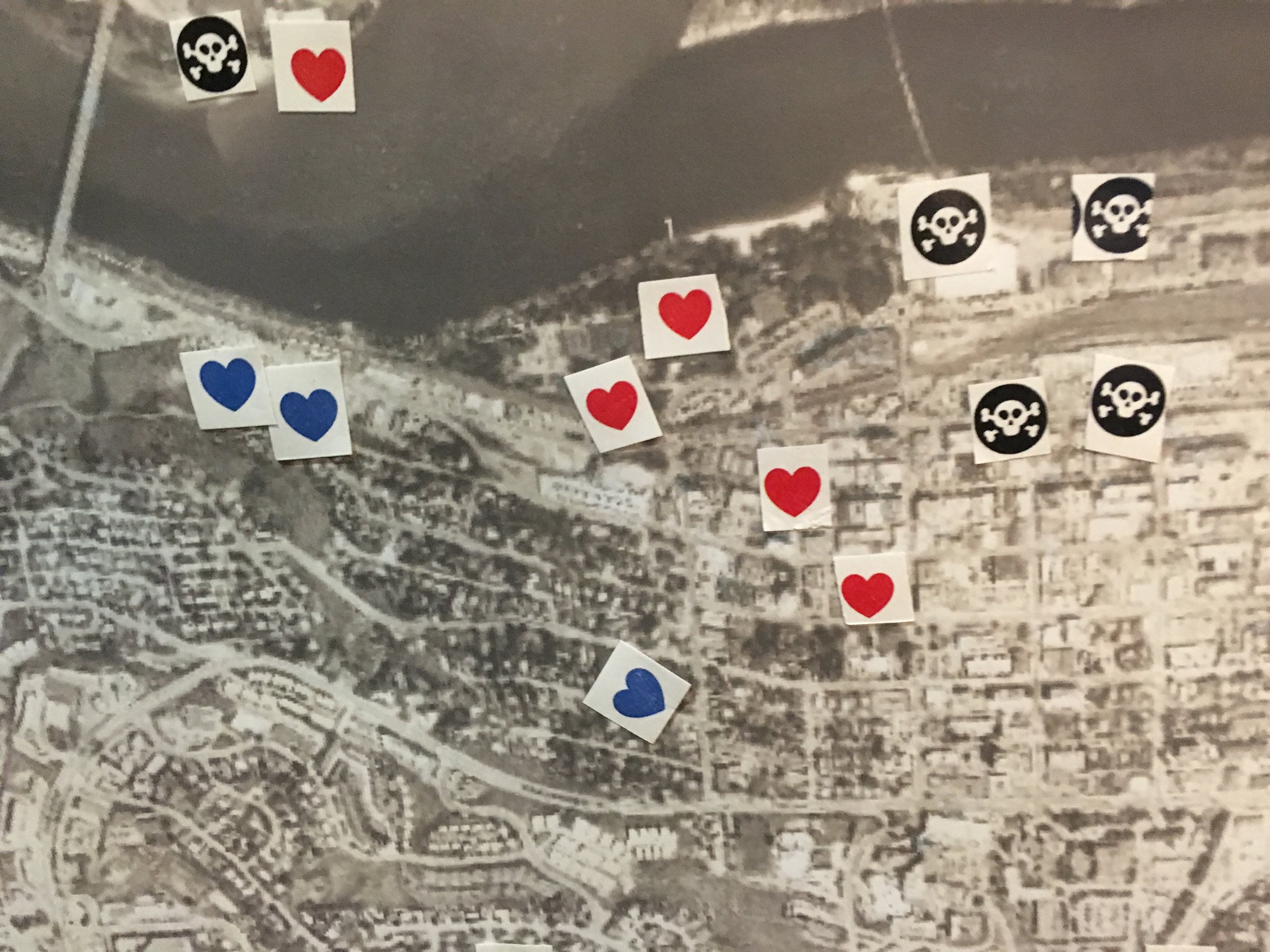Launch of 'EmpowerHER: a women's map to the city' at International Women's Day - United Way Leadership Council
The EmpowerHER: a women's map to the city was launched on March 8th on International Women's Day. The Women's Leadership Council event was hosted the United Way Thompson Nicola Cariboo in downtown Kamloops. The evening wine and cheese networking social featured RBC Olympian Anastasia Bucsis as an inspiring keynote speaker. The event launched EmpowerHER, a local initiative that will be empowering women to gain independence through access to The Rent Bank, financial literacy education and a matched savings program. Our cultural mapping project aimed to connect with these same women from the community; however, most of the women at this event could be described as professionals who experience the city by driving cars or walking for leisure.
This was our first trial for creative engagement - we were introduced by the Executive Officer of United Way and fliers were scattered on the cocktail tables. A large city map was pinned on the back wall where guests could engage with each other in conversation and make their marks on the map. 200+ women participated and described their experience of the city to each other by pasting tiny coloured icons on the map. We created a legend to map the directions clear.
Blue heart - beauty Red heart - safety Black Skull & Cross Bones - unsafe
We learned that many of these women did not feel safe walking downtown at night and some did not feel safe in their own workplaces. Other women did not want to locate where they felt unsafe as they did not want to stigmatize certain locations including the First Nations Reservation. The map cut off one of the neighbourhoods where many lived, 'Aberdeen'. Discussions illustrated generalized perceptions of place: North Shore was lower income, downtown was not safe at night, Aberdeen was comfortable, the hills were beautiful... these conversations between women were such valuable part of the project. Participants wanted to see what others had done before they located theirs. The request to label beauty, safety, and unsafe places created a 'third space' for guests to enter into conversations with each other in ways they may not have otherwise. Awareness of one's own privilege became very real for some when they realized their perceptions of place may sometimes derive from reputation, media or the inside of their car. One woman expressed how she didn't really know about downtown or Riverside Park at night because she can avoid these places unlike women with experience of homelessness.
Unlike the other workshops we ran with smaller groups of women, the method for this event was direct and immediate collaborative engagement. In each of the other locations and pop ups, we had individual maps available with facilitators to discuss a woman's individual experience before contributing to the collaborative public group map. The curiosity was visible from some women - leaning in to hear conversations and watch others place stickers, but some expressed 'its not for me.' Participation from the event mapped very different data and expression from these professional women to the other maps created by community women.


